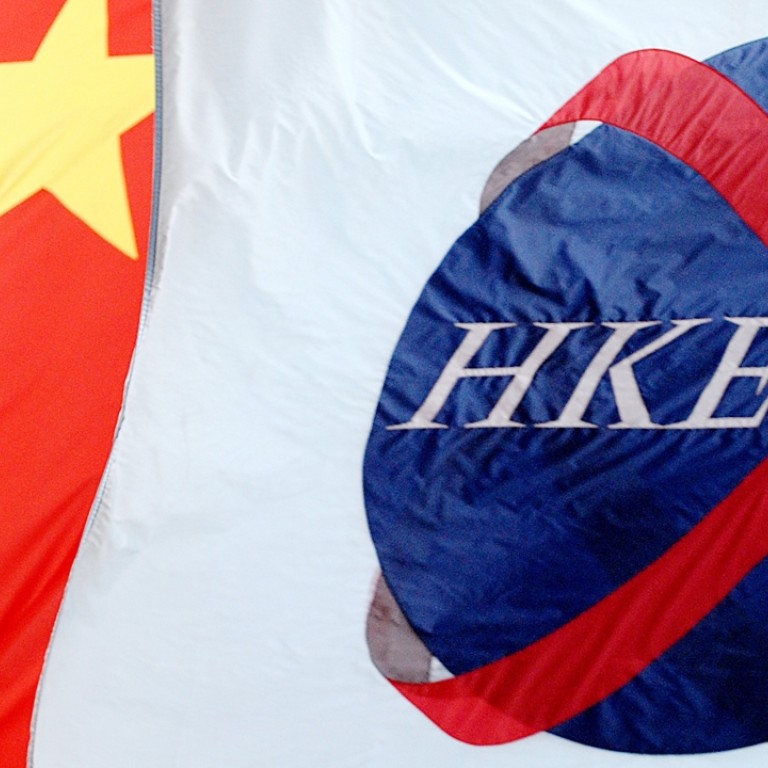
New | Speeding up China IPO approvals to dilute Hong Kong’s market share of offerings in 2016
Hong Kong plans to tighten its listing regime
The push from the Beijing to install a “registration-based” initial public offering (IPO) system will add fuel to mainland China’s primary securities market in 2016 and put pressure on Hong Kong’s share of the IPO market, analysts said.
The new guidance issued by Hong Kong Exchanges and Clearing (HKEx) on December 21 to ban cash companies from listing will discourage mainland companies from seeking back-door listings in Hong Kong.
China’s top legislation body, the Standing Committee of the National People’s Congress, endorsed a plan on December 27 to start a reform which hands over IPO vetting duties to stock exchanges, and minimise administrative intervention in the process.
The new registration-based IPO system will be in place in two years, but the first changes are expected to kick off from March, analysts said.
Beijing also gave the go-ahead last month to the Shanghai Stock Exchange to create a new board, called the strategic emerging industries board, to bolster new listings of innovative companies, while existing laws and regulations would be fine-tuned to encourage the relisting of overseas-traded Chinese technology firms on the A-share market.
Ringo Choi, the Asia-Pacific IPO leader of Ernst & Young, said implementation of a registration-based IPO format will comprehensively impact the A-share market.
“The mainland’s primary securities market is likely to outperform Hong Kong’s in 2016. The new board in Shanghai, which targets Internet and other high-tech companies, may divert some IPO deals from Hong Kong’s Growth Enterprise Market.”
With the registration-based system, new offerings will enjoy higher efficiency, and delisting rules will be stricter. More companies will turn to the A-share market for IPOs from the H-share market once the new system is streamlined, Choi said.
EY estimates new listings in Hong Kong will fall to 110 next year after 2015’s 121 due to tighter rules while fund raising will be around HK$260 billion, albeit with the hope stricter rules will raise the quality of companies listing in the exchange.
Wei Wei, an analyst with Ping An Securities, said the state council in Beijing is likely to issue general regulations for the new IPO system in January, while the China Securities Regulatory Commission (CSRC) is expected to hand out detailed rules for consultation the following month.
“It is possible that the A-share market will raise funds worth 850 to 950 billion yuan in 2016, surpassing a peak in fund raising made in 2010.”
Wang Sheng, a senior analyst with Shengwan Hongyuan Securities based in Shanghai, said though the CSRC will still “manage the pace of new listings”.
“It is unlikely that they would give approvals to the more than 600 companies on the waiting list for A-share IPOs in the next year. The priority of the CSRC is to keep the secondary market ‘stable’,” he said.
A leverage-based bull run pushed China’s A-share benchmark to a seven-year high in mid-June 2015, a height which was sharply denuded by a 30 per cent plunge in the following few weeks, with trillions of dollars wiped out from the market’s capitalization.
Louis Lau, Partner, Capital Markets Advisory Group, KPMG China, said Hong Kong still enjoyed an edge in gaining access to international investors. Meanwhile, the Shanghai-Hong Kong Stock Connect and the upcoming connection with Shenzhen’s exchange will bring the two markets closer and boost liquidity in both.
Hong Kong’s IPO market is to become the biggest globally in 2015, thanks to those state-owned companies keen on going global, and IPO candidates have shifting to Hong Kong to bypass the mainland jam in processing applications.
KPMG’s report issued in early December expected proceeds to reach HK$260 billion by the end of 2015, an increase from HK$232 billion registered last year,
It also forecast 100 companies to raise over HK$250 billion in 2016 via new listings, although the expected increases in US interest rates will have a negative effect on the stock market.
The biggest IPO deals in the pipeline including the new offering from Postal Savings Bank of China, which aims to raise US$10 billion. Peer-to-peer lender Lufax, under Chinese conglomerate Ping An Insurance, is looking to raise US$5 billion. China’s sixth-largest brokerage by assets, China Merchants Securities, plans to raise US$4 billion, according to people with knowledge of the deals.
The finance services sector has been the biggest source of new IPOs in 2015, with 10 Chinese banks and brokers raising nearly US$15 billion through Hong Kong IPOs, accounting for almost half of all share offerings, according to Dealogic data. It was the biggest year for finance IPOs in Hong Kong since 2010, and the listings helped drive the city to the top of the global IPO lineup, according to Dealogic.

